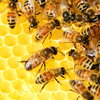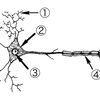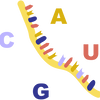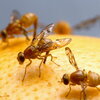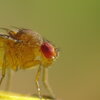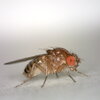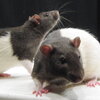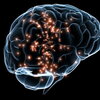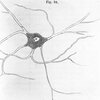Abstract
Mitochondria are highly dynamic organelles whose fragmentation by fission is critical to their functional integrity and cellular homeostasis. Here, we develop a method via optogenetic control of mitochondria-lysosome contacts (MLCs) to induce mitochondrial fission with spatiotemporal...
Recently Published
- Abstract Background: Opsin-based optogenetics has emerged as a powerful biomedical tool using light to control protein conformation. Such capacity has been initially demonstrated to control ion flow across the cell membrane, enabling precise control of action potential in...
- Individual differences in honey bee behavior enabled by plasticity in brain gene regulatory networksAbstract Understanding the regulatory architecture of phenotypic variation is a fundamental goal in biology, but connections between gene regulatory network (GRN) activity and individual differences in behavior are poorly understood. We characterized the molecular basis of behavioral plasticity in...
- Abstract Understanding how genotypic variation results in phenotypic variation is especially difficult for collective behaviour because group phenotypes arise from complex interactions among group members. A genome-wide association study identified hundreds of genes associated with colony-level...
- Context-dependent influence of threat on honey bee social network dynamics and brain gene expressionAbstract Adverse social experience affects social structure by modifying the behavior of individuals, but the relationship between an individual's behavioral state and its response to adversity is poorly understood. We leveraged naturally occurring division of labor in honey bees and studied the...
- Abstract Objectives: Masked speech recognition is typically assessed as though the target and background talkers are all directly facing the listener. However, background speech in natural environments is often produced by talkers facing other directions, and talker head...
- Abstract The use of spectrally degraded speech signals deprives listeners of acoustic information that is useful for speech perception. Several popular speech corpora, recorded decades ago, have spectral degradations, including limited extended high-frequency (EHF) (>8 kHz) content. Although...
- Abstract Recent work has demonstrated that high-frequency (>6 kHz) and extended high-frequency (EHF; >8 kHz) hearing is valuable for speech-in-noise recognition. Several studies also indicate that EHF pure-tone thresholds predict speech-in-noise performance. These findings contradict the...
- Abstract Proper neural function depends on the correct specification of individual neural fates, controlled by combinations of neuronal transcription factors. Different neural types are sequentially generated by neural progenitors in a defined order, and this temporal patterning process can be...
- Abstract During development, neural progenitors undergo temporal patterning as they age to sequentially generate differently fated progeny. Temporal patterning of neural progenitors is relatively well-studied in Drosophila. Temporal cascades of transcription factors or opposing temporal gradients...
- Abstract During development, neural progenitors are temporally patterned to sequentially generate a variety of neural types. In Drosophila neural progenitors called neuroblasts, temporal patterning is regulated by cascades of Temporal Transcription Factors (TTFs). However, known TTFs were...
- Abstract Temporal patterning is an important mechanism for generating a great diversity of neuron subtypes from a seemingly homogenous progenitor pool in both vertebrates and invertebrates. Drosophila neuroblasts are temporally patterned by sequentially expressed Temporal Transcription...
- Abstract How axon guidance pathways are utilized in coordination with temporal and spatial patterning of neural progenitors to regulate neuropil assembly is not well understood. We study this question in the Drosophila medulla using the transmedullary (Tm) projection neurons that target lobula...
- Abstract Notch-dependent binary fate choice between sister neurons is one of the mechanisms to generate neural diversity. How these upstream neural fate specification programs regulate downstream effector genes to control axon targeting and neuropil assembly remains less well understood. Here, we...
- Abstract Estrogen is a disease-modifying factor in multiple sclerosis (MS) and its animal model experimental autoimmune encephalomyelitis (EAE) via estrogen receptor alpha (ERα). However, the mechanisms by which ERα signaling contributes to changes in disease pathogenesis have not been completely...
- Abstract The increase in social acceptance and legalization of cannabis over the last several years is likely to increase the prevalence of its co-use with alcohol. In spite of this, the potential for effects unique to co-use of these drugs, especially in moderate doses, has been studied...
- Abstract Natural selection acts on underlying mechanisms to fine-tune expression of behaviour across scales – within individuals, among individuals, between sexes and across species. The inherently environmentally responsive nature of behaviour, or behavioural plasticity, may bias...
- Abstract The emergence of complex social interactions is predicted to be an important selective force in the diversification of communication systems. Parental care presents a key social context in which to study the evolution of novel signals, as care often requires communication and behavioral...
- Abstract The electrical activity of neurons has a spatiotemporal footprint that spans three orders of magnitude. Traditional electrophysiology lacks the spatial throughput to image the activity of an entire neural network; besides, labeled optical imaging using voltage-sensitive dyes and tracking...
- Abstract A recent theranostic approach to address Alzheimer's disease (AD) utilizes multifunctional targets that both tag and negate the toxicity of AD biomarkers. These compounds, which emit fluorescence with both an activation and a spectral shift in the presence of Aβ, were previously...
- Abstract Non-ergodicity of neuronal dynamics from rapid ion channel gating through the membrane induces membrane displacement statistics that deviate from Brownian motion. The membrane dynamics from ion channel gating were imaged by phase-sensitive optical coherence microscopy. The distribution of...
- Abstract Noncanonical genomic imprinting can cause biased expression of one parental allele in a tissue; however, the functional relevance of such biases is unclear. To investigate ethological roles for noncanonical imprinting in dopa decarboxylase (Ddc) and tyrosine hydroxylase (Th), we use...
- Abstract Practice in real-world settings exhibits many idiosyncracies of scheduling and duration that can only be roughly approximated by laboratory research. Here we investigate 39,157 individuals’ performance on two cognitive games on the Lumosity platform over a span of 5 years. The large-scale...
- Abstract When responding to queries for information, people control the grain size (precision–coarseness) of the information they communicate based on competing goals of accuracy and informativeness (Goldsmith & Koriat, Behavioral and Brain Sciences, 1999, 19...
- Abstract Background: A core cognitive attribute of depression is lower specificity in the expression of autobiographical memories. Despite interventions targeting memory specificity in depression, its underlying mechanisms are not yet fully understood. Depression also relates to...




